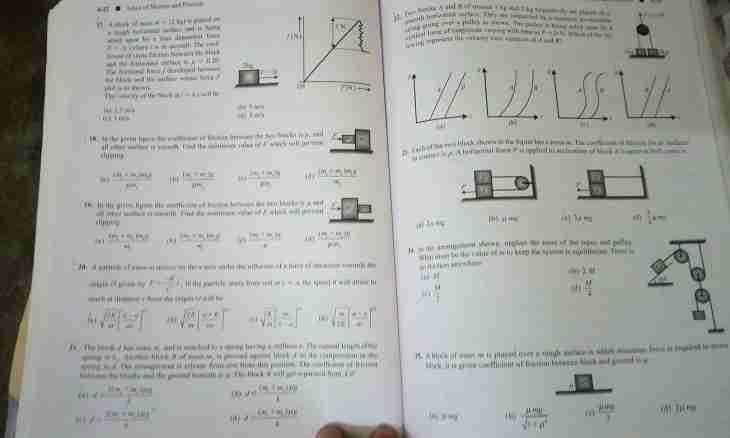The mass of any physical object helps to estimate what effort should be made to get moving forward it in the absence of the gravity and friction force. But we should deal with weight in other its manifestation which is usually called "weight" more often. It is defined as force with which the physical body presses on a surface as a result of terrestrial gravitation. That to distinguish them these two forms of weight call "inertial" and "gravitational".
Instruction
1. Weigh a cylinder by means of scales of the necessary degree of accuracy and receive value of its weight in the conditions of influence of terrestrial gravitation - gravitational weight. It is the simplest, but not always the available way applicable to physical objects not only a cylindrical form.
2. If there is no opportunity to weigh, then calculate the space volume which occupies a cylindrical object, and determine density of material of which it consists. These two characteristics are connected with weight a constant ratio which formula will allow to calculate body weight. For determination of density of substance it is necessary to use the corresponding tables of reference books. In paper option they can be taken in library, and in electronic form is to find in the Internet or in shop on optical disks with thematic selections of materials.
3. The volume of a cylinder can be determined by make-shifts - for example, to ship it in the measured ware filled with water and to estimate the volume of the forced-out water. The received value, most likely, will be designated on measured tools in liters and units, derivative of it. For transfer to cubic meters and its derivatives use such ratio: one liter is equal to one cubic decimeter.
4. If it is not possible to determine volume (V) in the way given in the previous step, then determine the physical sizes of a cylinder - its diameter (d) and height (h). Calculate value of one quarter of the work of number of Pi taken with the necessary degree of accuracy, on the squared diameter - so you will find value of the area of the basis of a cylinder. Increase it by height and receive the volume of a cylindrical object: V=¼*π*d*h.
5. Now are known to you substance density (ρ) of which the cylinder, and its volume consists (V). For calculation of mass (m) of an object just multiply these two values: m=ρ*V.

